As I always say the only thing two dog trainers will ever agree on is that a third trainer is an idiot and does everything wrong. We all think our way is the only right way. But this is one principle I will fight about until my last breath.
I have never had a gun shy dog, and I have helped many recover. If your dog is gun shy, You introduced it wrong. Period the end. It is the same with a retrieve though we covered that last week. If your dog doesn’t retrieve, someone screwed it up. Period. I do have a dog in the kennel that has severe anxiety about thunder and fireworks, but that dog looks forward to a gunshot.
The first school of old thought was to go out an make noises around your kenneled dogs for no reason at all. Banging pots and pans, or as one idiot I saw once did, light a string of firecrackers. The idea is that you are desensitizing them to sound. The reality is you are creating all kinds of anxiety about loud noises. When this idea works it isn’t because you have desensitized a dog, it is because you have damaged their hearing. Now good luck getting them to respond to commands in the field… So then they graduate to shock collars to communicate to a dog in the field. Can you think of a more unfair situation for your partner that is devoted to serving you already?
Desensitization isn’t effective for gunfire in my opinion.
A gunshot should always mean “Dead bird” to the dog in field. It should be the cue to start the next phase of a hunt. Not something he has gotten used to or learned to tolerate, but rather something your Brittany is looking forward to.
I have always stated hunting is a three part game.
- Hunt live birds- I start this with an enthusiastic “Hunt ’em up!” or “Where’s the birds?”
- Hunt dead- An excited shout of “Dead!” “Hunt it dead!” “Dead bird!” gets them all revved up because hunting the bird and being allowed to put it in your mouth now is a huge reward for the dog. A retrieve is something they look forward to. They are bird dogs. They want a bird in their mouth that is why they hunt live in the first place. The idea for the dog of hunting is to catch unless we have screwed that up
- Retrieve to hand- “Bring!” or “My bird!” “Bring it here!” Again they are a dog. Their very nature is to put things in their mouth and bring it to their masters. This is how wolves talked us into domesticating them in the first place. They went from an animal we feared and hunted and killed to an animal sharing our beds and sofas and pickup trucks. Talk about the best salesman in the world! A Cute Brittany puppy can get about anything out of you with a cute look.
So back to gunfire. For my French Brittany dogs a gunshot is something they are looking forward to it is the very reason we are out in the field.
Here is an important point. I never take my dogs with me when I am shooting skeet or target shooting. I never shoot around them needlessly. Gun shot should always mean dead bird. A Gunshot is a command. This is because I don’t break to Wing, shot and fall. I don’t trial that way, I don’t hunt that way. I hunt wild Chukar in the mountains of the west, and when I shoot I want the dog already running my bird down as a tool of conservation. I don’t want them to wait and then hope they can find a chukar that fell 200 yards below us in a steep ravine. I don’t want crippled birds getting away to suffer and die. If I am going to kill animals it should be as free of suffering as possible, and I should use the meat with gratitude for their sacrifice. But that is my moral compass about killing birds you have your own.
So again gunshot must mean dead bird. So while in training because I am human and miss from time to time, when I am starting a young dog on live birds I always have a dead one in my pocket. This also helps the dog with opportunities to learn once the bird goes in my jacket it is my bird, you need to go find your own. When I first fire a gun around a dog, it is because we have shot a bird the dog has found, or shot at lol. If I miss the bird I take the dead one from my pocket and throw it out ahead of the dog and begin shouting “Dead! Hunt it dead! Dead bird!” and get them all revved up. They are already birdy from finding the bird, and if they held a nice point that anticipation builds. Then the bird flushes and they come apart with excitement. That’s when I shoot. I associate the gunshot with their euphoria of doing what they were selectively bred to do for hundreds of years. Now let me ask any of you large game hunters out there who shoot big bore rifles… How hard do these large rifles kick when we are punching paper? Man if I am shooting without a rest of some kind and shoot hot loads out of my 7mm magnum or even my 30-06 I really don’t like pulling the trigger. But now tell me how much that same rifle kicks when there is an Elk or deer in my sights? Heck then I don’t even feel it at all! The adrenaline and excitement changes everything. It is the same for the dog.
There are some important considerations however. Never let your dog be directly in front of your muzzle blast at close range. You have had people shoot close to you too I am sure and you can understand what that sound and percussion wave feel like. That will help a dog become gun shy. Never ever ever ever ever accidentally hit your dog. Once you have peppered your dog with shot it may never hunt again…. Would you? This is a cardinal rule when I let anyone hunt over my dogs at all. I am a gun safety nazi. I take it so serious. I don’t care if you have hunted 60 years without accident. You come out with me and my dogs you are going to get a gun safety lecture before the dogs even get out of the trailer. In the field I am a range safety officer. You will be given command to shoot only if and when it is a safe shot. I don’t mind watching birds wild or liberated fly away if it means keeping my dogs safe.
Outside of that a lot of people worry about what gauge to start with etc. Some believe you must start with a .22 gunshot (Which can’t hit your bird safely for you by the way) or starter pistols etc. This point isn’t worth arguing over to be honest for the most part. Go back to the idea of shooting a rifle at large game vs. shooting it at paper. If I am target shooting man the .243 is nice! But it won’t bring down a bull elk. The 7mm is great for the elk but I hate shooting paper with it.
So what is most important is when you fire not what you fire. That being said if I am starting a French Brittany puppy or English setter, they are pointing breeds. I should be very close to the bird as it fly’s away. Flushers are different.
I love sub gauge shotguns for hunting now. Not because I am not manly, not because I am sensitive to recoil, I have plenty of 12 gauge shotguns and sometimes I use them, but increasingly I shoot a 28 gauge or a .410 bore. There is no recoil at all, they are so light to carry in the field and they are so cheap for me to reload. Powder and shot have gone up in price so much I can not save money loading my own 12 gauge shells. All I can do is shoot custom loads which has purpose. The store bought shells are cheaper for 12. But with 28 or .410 I can save a lot of money with reloads which means more shooting! Lastly there is a big difference in eatability with a quail I shoot with these sub gauges vs a 12 gauge. Pheasant I often still use a 12 (especially hard flying wild birds) or a 20, but chukar, huns, quail and even grouse I almost always grab a 28 or .410
Because I am in close range and because I love sub gauge guns, the first time I shoot over my French Brittany it is likely to be a quail shot with a .410 because of range and size of the bird. But before you get yourself hung up on size of gun to shoot over your french brittany puppy consider this chart:
Table-1-SHOTGUN-NOISE-DATA-DECIBEL-AVERAGES
| .410 Bore | 28″ barrel | 150dB |
|---|---|---|
| 26″ barrel | 150.25dB | |
| 18 1/2″ barrel | 156.30dB | |
| 20 Gauge | 28″ barrel | 152.50dB |
| 22″ barrel | 154.75dB | |
| 12 Gauge | 28″ barrel | 151.50dB |
| 26″ barrel | 156.10dB | |
| 18 1/2″ barrel | 161.50dB |
Obviously this leaves out my favorite 28 gauge and 16 (my favorite pheasant gauge) but you can see there is not much real difference in sound level between the different gauges. The reference for 10 decibels is often given as the rustling of leaves. So that is the difference between .410 and 12 gauge. Now consider this, pistols, centerfire rifles also start at 150 decibels, and a rimfire starts at about 111. Heck even a BB gun is 97 decibels! So gauge is less important than many people will lead you to believe. but how close your dog is to the gun makes a huge difference.
The ideal situation is this for a first time shot over a young dog or French Brittany puppy. The puppy finds the bird and points. We move in and either flush or launch the bird for a launcher and now we are out in front of the dog forcing the flush out in front of ourselves and the dog. We fire and the dog is behind the shotgun instead of directly in front of the muzzle blast. Dog loses its mind with excitement and runs that bird down and brings it back.
Things don’t always go ideal, that is why it is called training and practice we work towards perfection.
By understanding all of this and creating a learning opportunity and a learning environment like this we create an outcome where the French Brittany or English Setter puppy wants to hear that gunshot. My dog love when we load in the trailer to go exercise or train, but they get more excited when they see me put on my blaze orange vest. If they see me grab a shotgun they know for sure this isn’t a drill they are going to get a bird and their excitement level changes off the charts. They love the gun. The gun means dead birds.
Now what if you have already screwed up introducing gunfire to your French Brittany? Can it be fixed? The answer is sometimes. It depends on how bad we have screwed it up, your dogs personal character and resilience, and your abilities as a trainer. Get this philosophy in your head, and try it the right way and see if that makes a difference. If not call me and we can look at options for your dog.
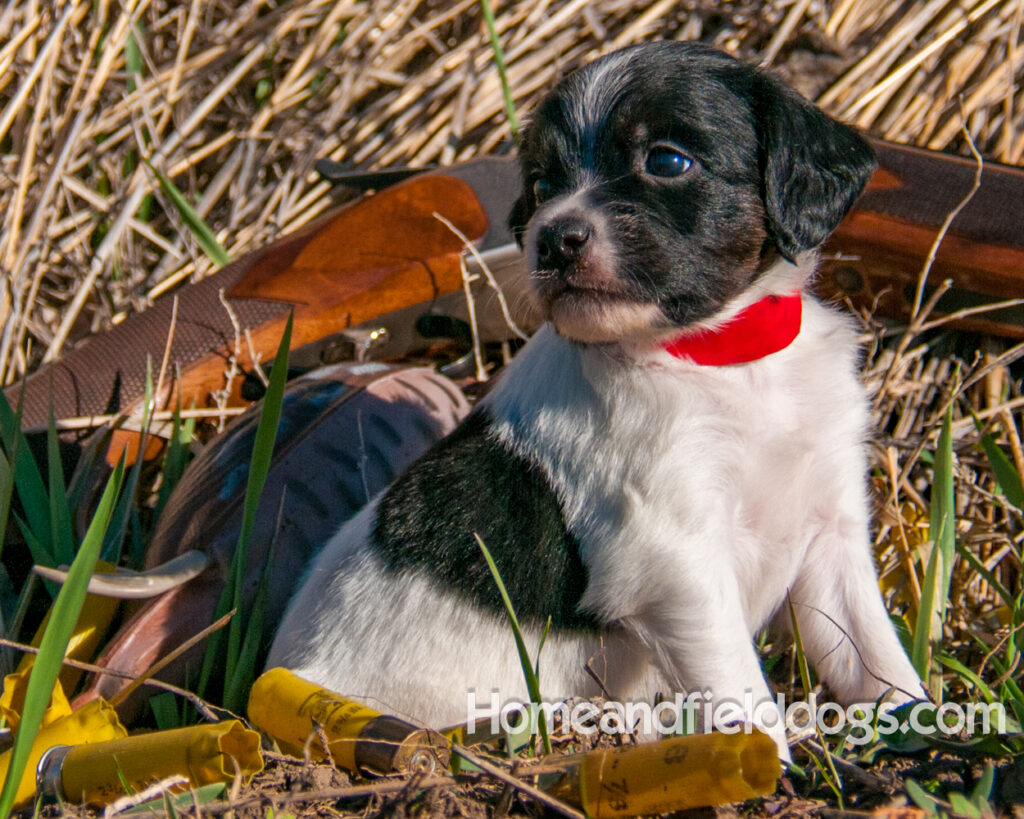
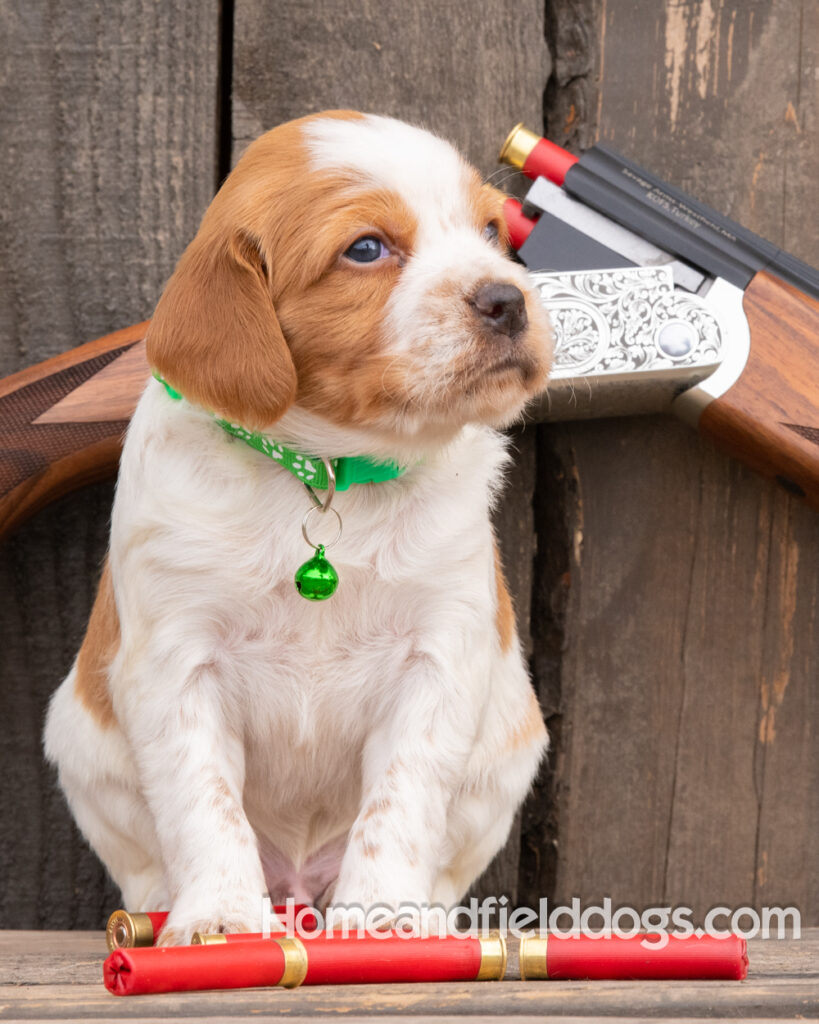
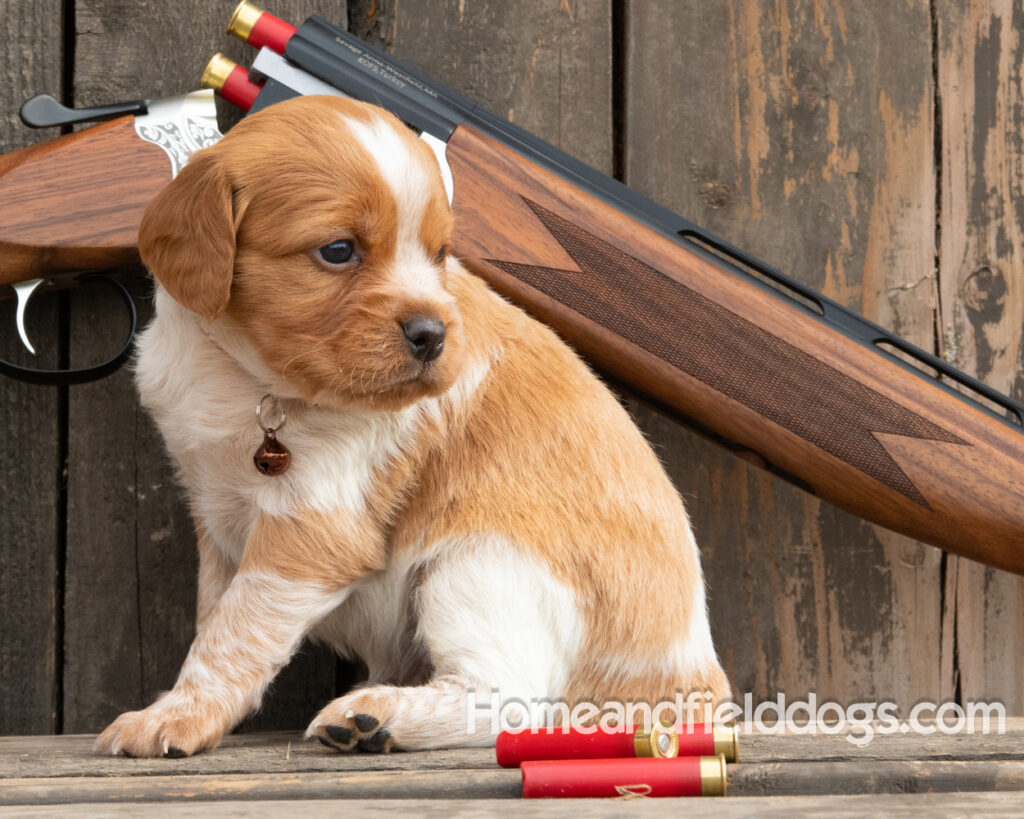
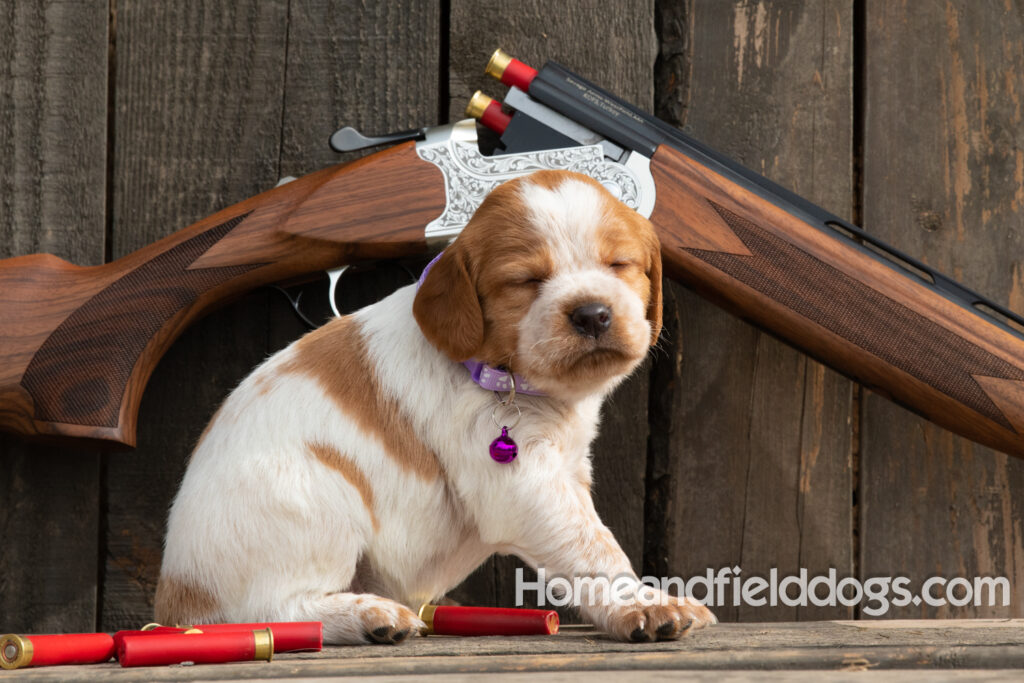
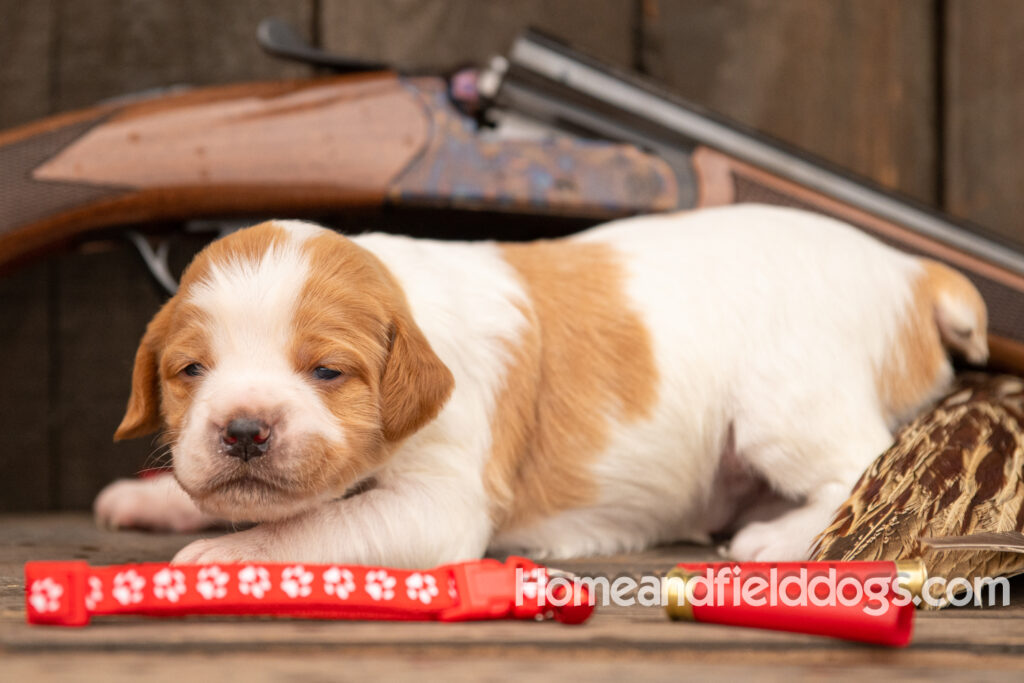
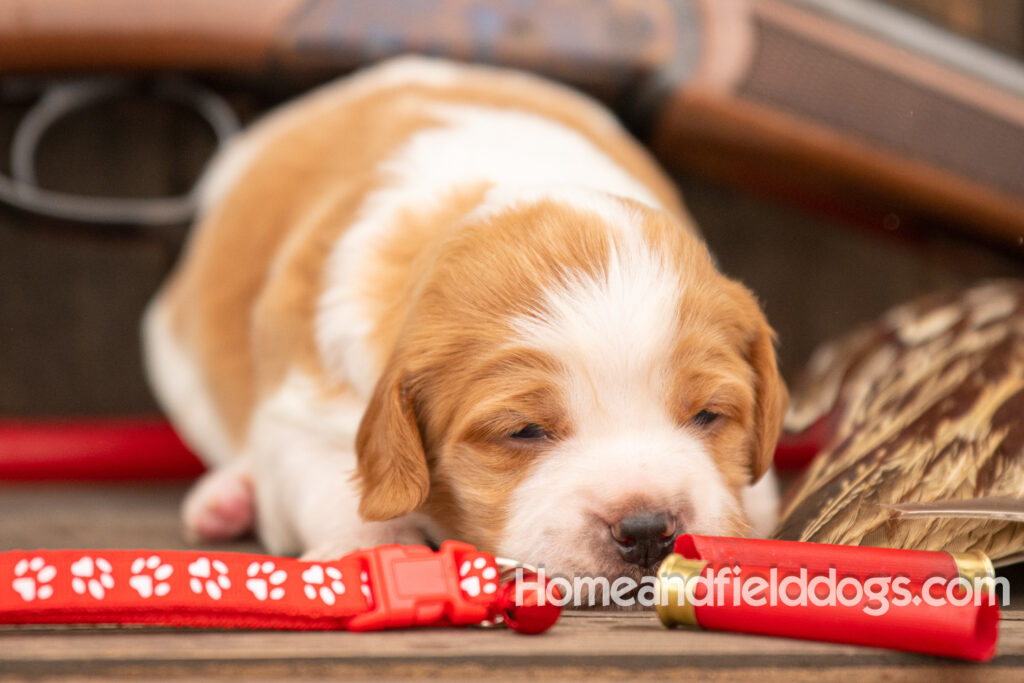
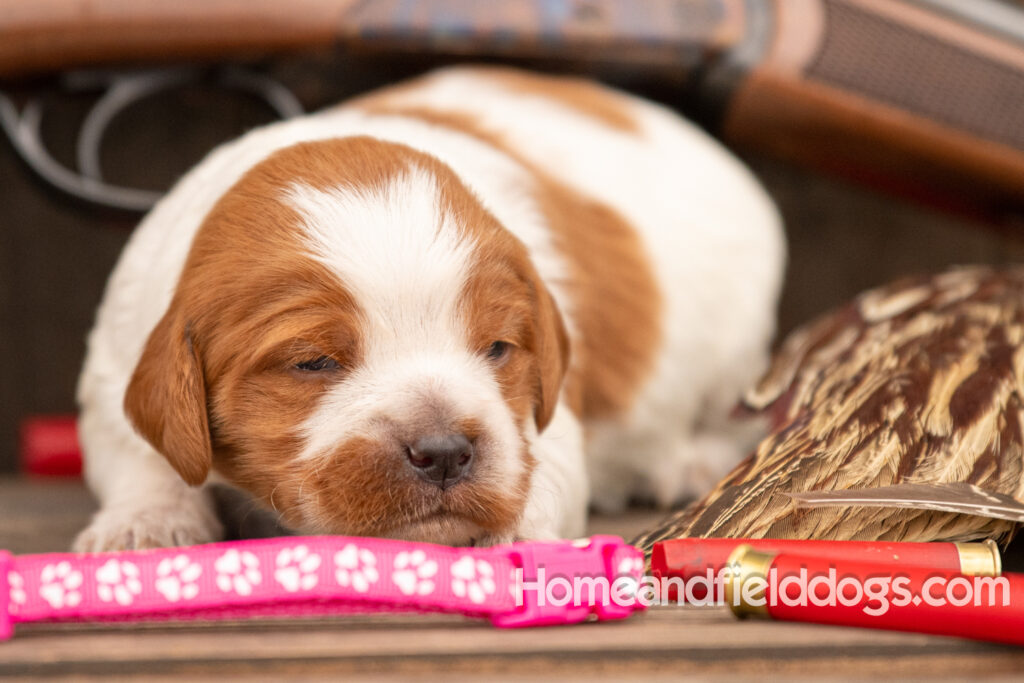
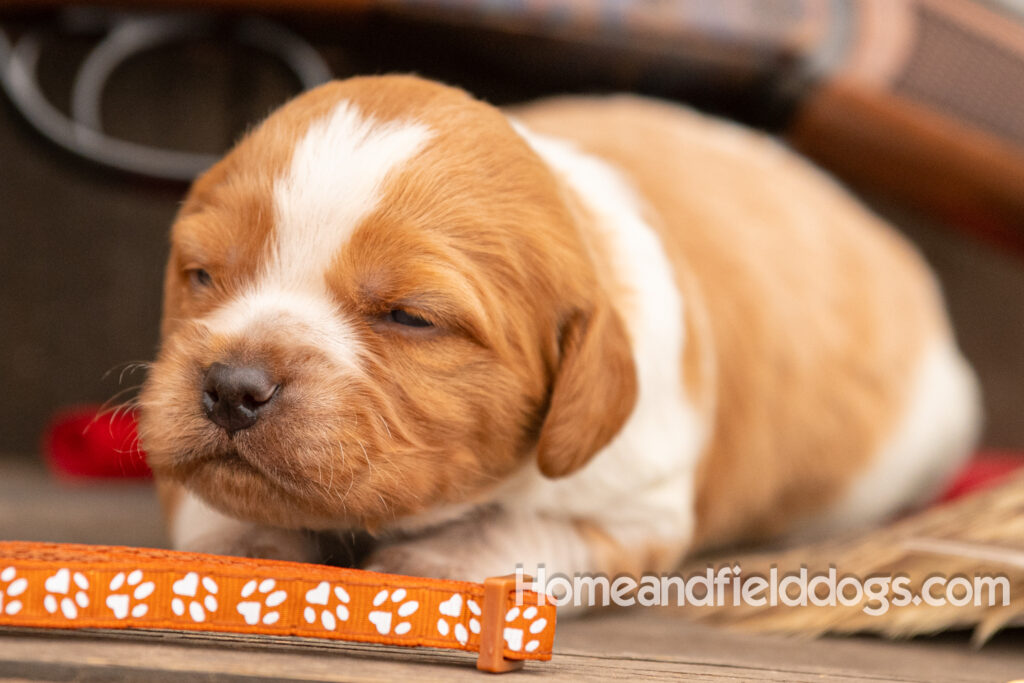
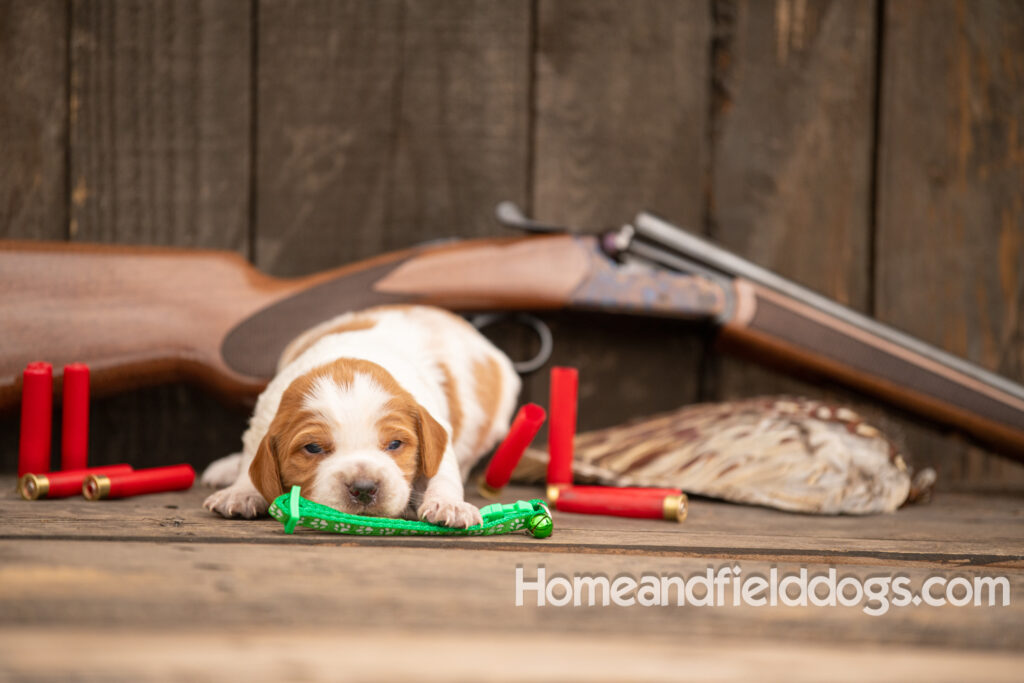






Leave A Comment